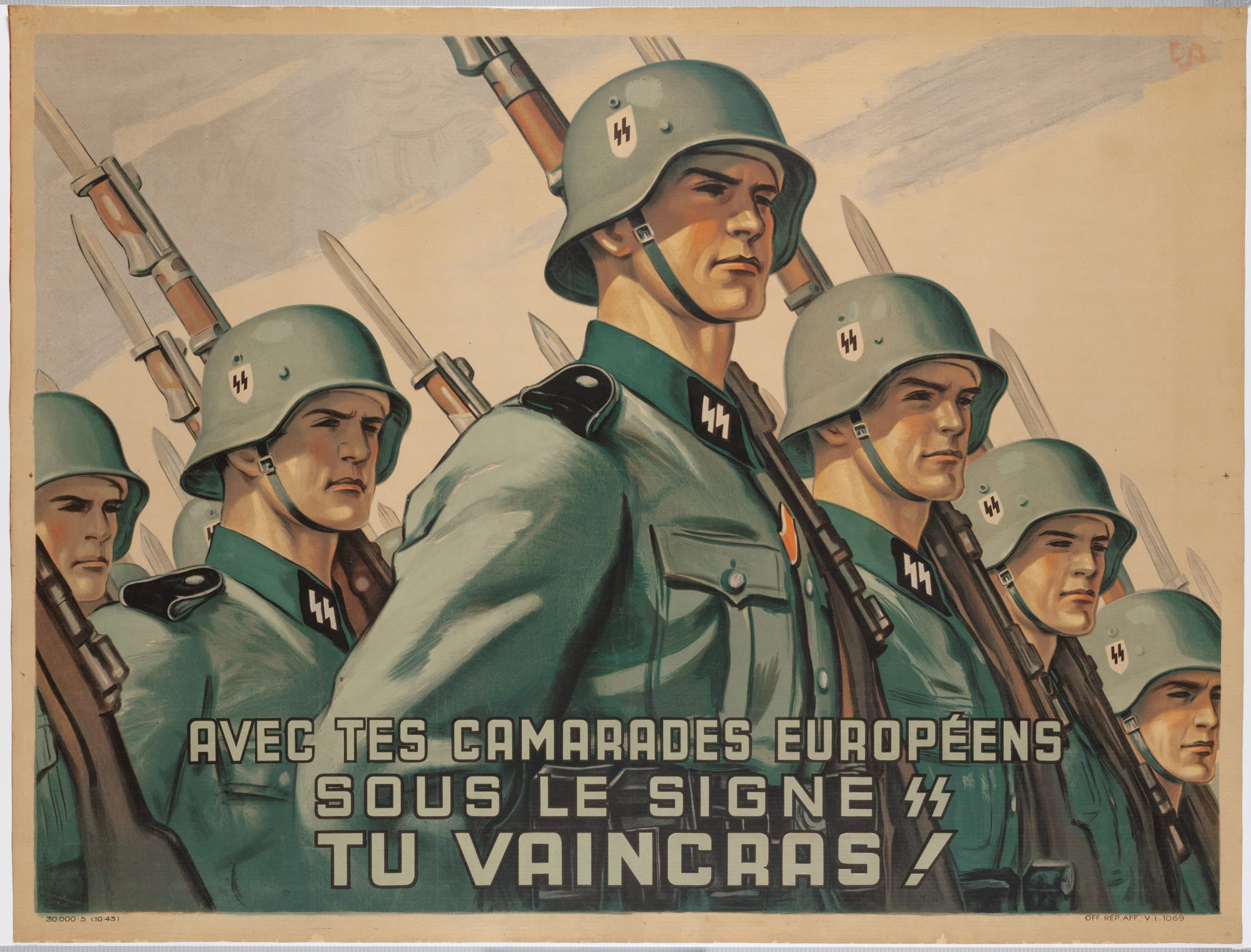These soldiers are members of the Waffen-SS, an elite unit of the German army, identifiable by the lightning-bolt-like insignia on their helmets and uniform collars. Waffen-SS soldiers were required to show proof of “Aryan” ancestry as far back as 1750. Previously, the term Aryan referred to speakers of a variety of European and Asian languages. However, the Nazis reinterpreted the term to give formal basis to an invented hierarchy of racial superiority that placed white, Christian Germans at the top. At the bottom were Jews, Black people, Roma and Sinti, queer people, and people with mental and physical disabilities.
The German soldiers in this poster march with strength and purpose toward the right of the frame, implying eastward movement to the Soviet Union. The central figure is wearing a red, black, and white ribbon on his uniform—Germany’s highest military honor, the Iron Cross, awarded for bravery. His Iron Cross and prominence at the apex of a triangular composition identify him as a hero. Nazis leveraged widespread anti-Communist sentiment among Europeans to recruit “Aryans” from France and other countries to fight the Soviets. This poster appeals to the French through shared cultural notions of heroism, masculinity, and racism rather than through Nazi ideological symbols such as swastikas and party banners. The poster also emphasizes Western European affinities with Nazi Germany in a crusade against Bolshevik barbarism, and masks negative realities about Nazi ideology and the German army’s defeat at Stalingrad.
Looking closely at the visible is a launching pad for further analysis of the poster, as the following contextualization suggests.
This poster economically conveys an impression of strength, power, and solidarity. Strategic placement of multiple rifles suggests a sizable unit without the need to show masses of men. Homogeneity of physical features and stern expressions communicate a sense of discipline and common purpose while the centrally located figure signals an opportunity for leadership. The result: an amplification of the appeal of the crusade against Bolshevism and its invitation to participate in a triumphant collective enterprise. Interestingly, the first French division of the Waffen SS was called the “Charlemagne Division,” named after the founder of the Holy Roman Empire whose domain included both French and Germanic lands.
